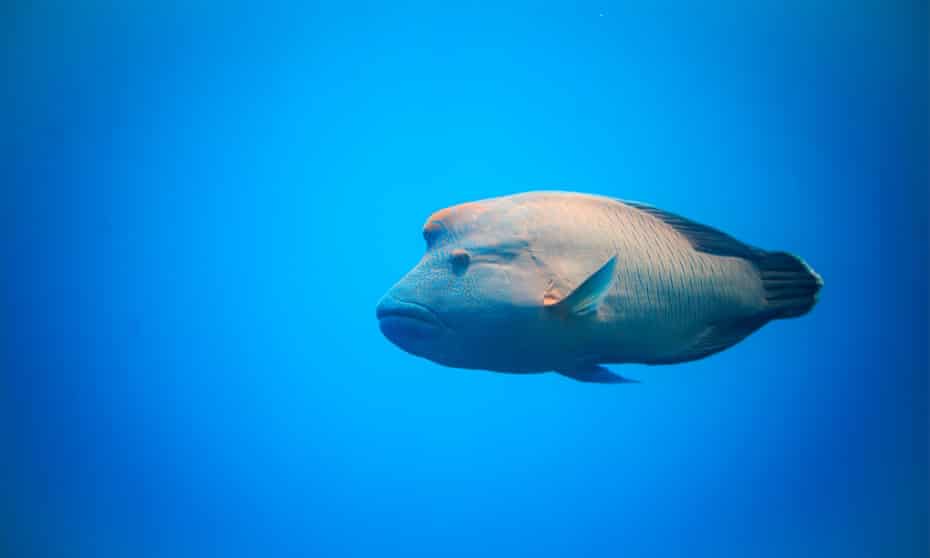What would a tropical reef look like if it could escape the man-made perils of global heating and overfishing?
A new study suggests it would look like Rowley Shoals, an isolated archipelago of reefs 260km off Australia’s north-west coast.
“As soon as you jump in you realise there’s something special,” said fish biologist Matthew Birt. “The coral cover is amazing.”
As many corals growing in the Pacific as trees in the Amazon, new study finds
Read more
Birt has just led a study on the three reefs that make up the uninhabited Rowley Shoals, using cameras with baits that allowed Birt and colleagues to analyse the marine life over 14 years.
The study found the relative isolation of Rowley Shoals, protections from commercial fishing, and its shape and location has sustained threatened species and rich biodiversity during a time of “unprecedented degradation of coral reefs” elsewhere around the world.
Giant fish like the humphead Maori wrasse and humphead parrotfish – both growing to more than 1.5m – were seen regularly at Rowley Shoals, despite their globally threatened status.
“What was remarkable was there was no real change in the abundance [of fish] through time. We don’t see any evidence of decline,” said Birt, of the Australian Institute of Marine Science (Aims).

The three atolls of Rowley Shoals – Imperieuse, Clerke, and Mermaid – are about 30km apart. Mermaid Reef is a marine park managed by the Australian government where no fishing is allowed.
Imperieuse and Clerke reefs are managed by the Western Australian state government that has also imposed fishing restrictions across the area of the reefs.

Across the three atolls, some 752 sq km is classed as “no take” where fishing is not allowed. The location – well off Australia’s coast and even further from Indonesia – also gave the area protection.
Birt and colleagues deployed sets of cameras 88 times across the three atolls and compared their results to previous observations on the atolls going back to 2004.
The researchers also compared the types and numbers of fish to other locations in the same region but further north – Scott Reef, Browse Island, Ashmore Reef, Cocos Islands, and Christmas Island – where protections from fishing have not been as strong.
The diversity of fish at Rowley Shoals stood out, making it one of the Indian Ocean’s last coral reef systems free from human disturbance, the study in the journal Ecology and Evolution said.
“Under the right conditions, this is what a reef can look like,” said Birt.
Even though Rowley Shoals had been hit by cyclones in years gone by, the corals had escaped the damaging bleaching that had hit reefs further north in previous years.

Aims coral ecologist Dr James Gilmour said Rowley Shoals was now one of Australia’s healthiest reef systems.
The high numbers and range of fish made the coral ecosystem more resilient, he said.
Last year, a global study found unsustainable fishing on tropical reefs around the world had caused a crash in the numbers of sharks – a species marine scientists say are vital for healthy ecosystems.

